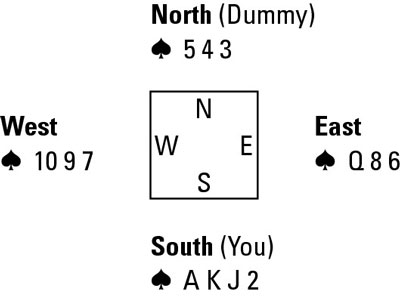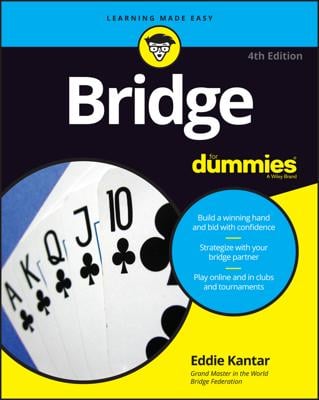In bridge, when you take finesses in suits that have seven or more cards between your hand and the dummy — meaning your side has more cards in that suit than your opponents (known as length) — you always have a chance of developing an extra trick or tricks with small cards, as this image shows.

You have the ♠A and ♠K between the two hands, but you want more than two tricks. You also want to take a trick with your ♠J. You even want to take a trick with your ♠2. You may as well think big when you have seven or more cards in the same suit between your hand and the dummy. The hand might go like this:
You lead a low spade, the ♠3, from the dummy (from weakness toward strength).
East plays low, the ♠6.
You play the ♠J.
The ♠J wins!
Now you can play the ♠A and ♠K, which both win tricks.
Guess what? You’re the only person left at the table with any spades.
4. Play that lowly ♠2 to take another trick.
You’ve managed to take four spade tricks because you combined a finesse with the power of length.
Of course, if West has the ♠Q, your finesse doesn’t work. You’re going to lose finesses about 50 percent of the time. When a finesse fails, keep your cool. Try to avoid showing emotion during the play — otherwise, you give your opponents too big a high.
Don’t let the risk involved with finesses scare you away from trying them, especially if you’re finessing in a long suit. A finesse in a long suit has the advantage of setting up small cards in the suit, even if the finesse doesn’t work.

